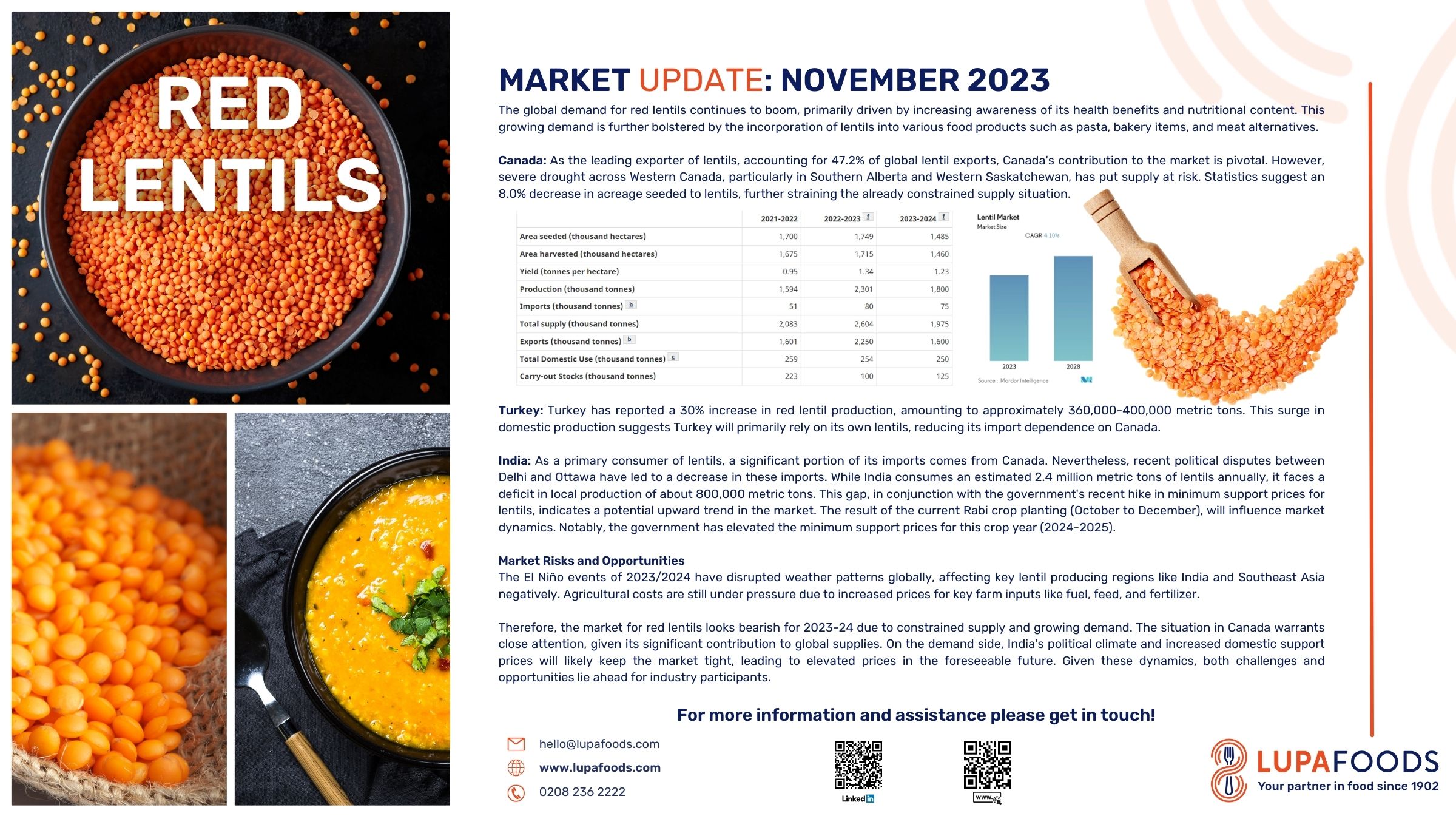The global demand for red lentils continues to boom, primarily driven by increasing awareness of its health benefits and nutritional content. This growing demand is further bolstered by the incorporation of lentils into various food products such as pasta, bakery items, and meat alternatives.
Canada: As the leading exporter of lentils, accounting for 47.2% of global lentil exports, Canada’s contribution to the market is pivotal. However, severe drought across Western Canada, particularly in Southern Alberta and Western Saskatchewan, has put supply at risk. Statistics suggest an 8.0% decrease in acreage seeded to lentils, further straining the already constrained supply situation.
Turkey: Turkey has reported a 30% increase in red lentil production, amounting to approximately 360,000-400,000 metric tons. This surge in domestic production suggests Turkey will primarily rely on its own lentils, reducing its import dependence on Canada.
India: As a primary consumer of lentils, a significant portion of its imports comes from Canada. Nevertheless, recent political disputes between Delhi and Ottawa have led to a decrease in these imports. While India consumes an estimated 2.4 million metric tons of lentils annually, it faces a deficit in local production of about 800,000 metric tons. This gap, in conjunction with the government’s recent hike in minimum support prices for lentils, indicates a potential upward trend in the market. The result of the current Rabi crop planting (October to December), will influence market dynamics. Notably, the government has elevated the minimum support prices for this crop year (2024-2025).
Market Risks and Opportunities
The El Niño events of 2023/2024 have disrupted weather patterns globally, affecting key lentil producing regions like India and Southeast Asia negatively. Agricultural costs are still under pressure due to increased prices for key farm inputs like fuel, feed, and fertilizer.
Therefore, the market for red lentils looks bearish for 2023-24 due to constrained supply and growing demand. The situation in Canada warrants close attention, given its significant contribution to global supplies. On the demand side, India’s political climate and increased domestic support prices will likely keep the market tight, leading to elevated prices in the foreseeable future. Given these dynamics, both challenges and opportunities lie ahead for industry participants.





